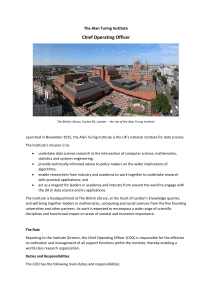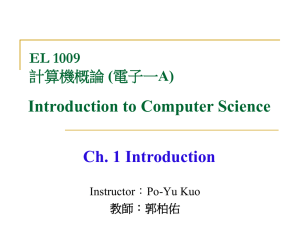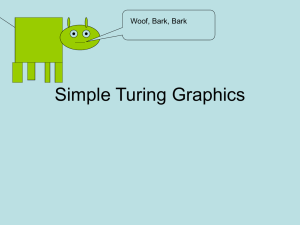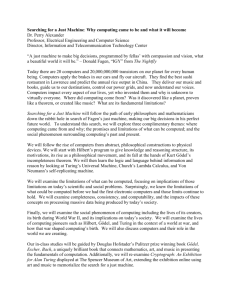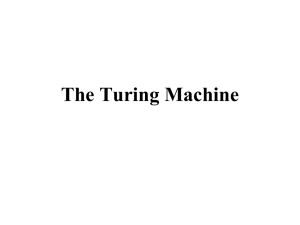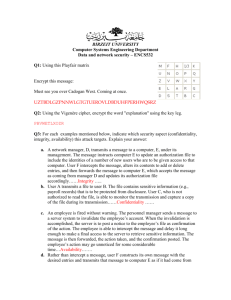Alan Turing (Shelby Guenette)
advertisement
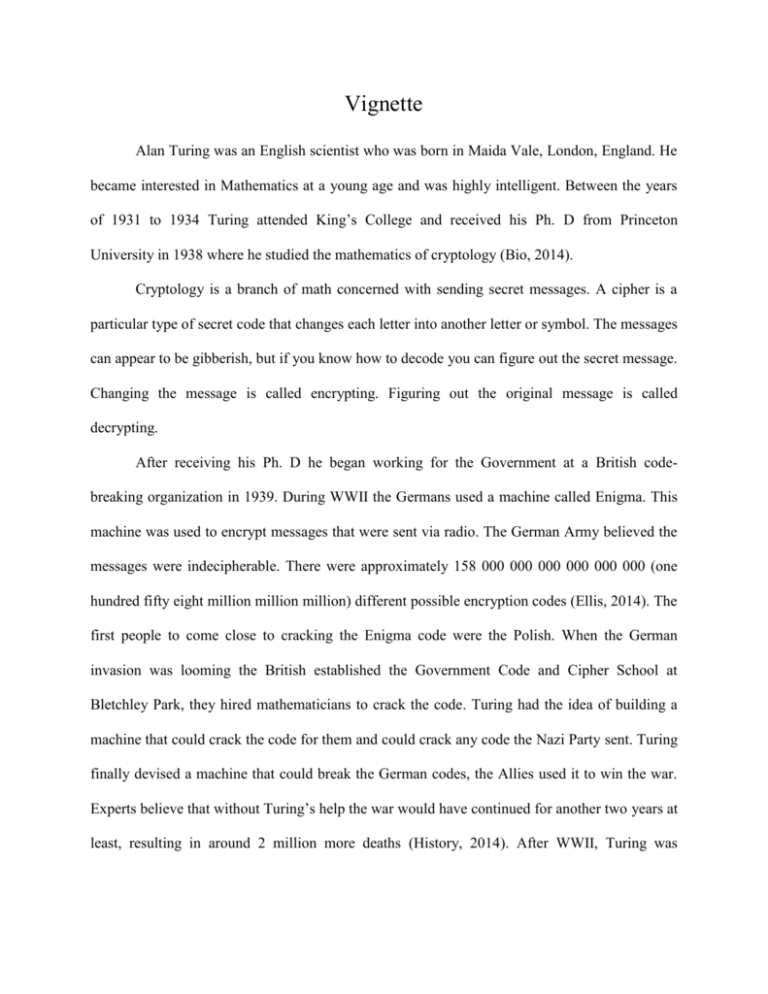
Vignette Alan Turing was an English scientist who was born in Maida Vale, London, England. He became interested in Mathematics at a young age and was highly intelligent. Between the years of 1931 to 1934 Turing attended King’s College and received his Ph. D from Princeton University in 1938 where he studied the mathematics of cryptology (Bio, 2014). Cryptology is a branch of math concerned with sending secret messages. A cipher is a particular type of secret code that changes each letter into another letter or symbol. The messages can appear to be gibberish, but if you know how to decode you can figure out the secret message. Changing the message is called encrypting. Figuring out the original message is called decrypting. After receiving his Ph. D he began working for the Government at a British codebreaking organization in 1939. During WWII the Germans used a machine called Enigma. This machine was used to encrypt messages that were sent via radio. The German Army believed the messages were indecipherable. There were approximately 158 000 000 000 000 000 000 (one hundred fifty eight million million million) different possible encryption codes (Ellis, 2014). The first people to come close to cracking the Enigma code were the Polish. When the German invasion was looming the British established the Government Code and Cipher School at Bletchley Park, they hired mathematicians to crack the code. Turing had the idea of building a machine that could crack the code for them and could crack any code the Nazi Party sent. Turing finally devised a machine that could break the German codes, the Allies used it to win the war. Experts believe that without Turing’s help the war would have continued for another two years at least, resulting in around 2 million more deaths (History, 2014). After WWII, Turing was awarded the Order of the British Empire for this code-breaking contributions (Encyclopaedia Britannica, 2014). Grade 11 – Cryptology - Worksheet INSTRUCTIONS: Decrypt the messages below. They are written using a cipher, a cipher strip is provided for you. HINT: Once a couple letters are determined see if there is a pattern that will help with determining the other letters. The numbers above the letters may help in seeing the patterns. There may also be a chance that some of the letters represent themselves. Example: WE CAN ONLY SEE A SHORT DISTACE AHEAD BUT WETSQD XJJ F XMTWY INXYFSHJ FMJFI GZY BJ BJ HFS CAN SEE PLENTY THERE THAT NEEDS TO BE DONE HFS XJJ UQJSYD YMJWJ YMFY SJJX YT GJ ITSJ. - Alan Turing In this example the entire alphabet is shifted by 5. This is just one of the many possibilities that can be used to encrypt a code. Note: The top letters are the letter from the encrypted code, the bottom letter will give the original code. 0 1 2 3 4 5 6 7 8 9 10 11 12 13 14 15 16 17 18 19 20 21 22 23 24 25 A B C D E F G H I J K L M N O P Q R S T U V W X Y Z V W X Y Z A B C D E F G H I J K L M N O P Q R S T U Puzzle 1: SQ JQON JMMT MNQISV YNFQ ANUFVYNS ANJ UQI OYHH PYNJ KAEV. - Dean Schilcter 0 1 2 3 4 5 6 7 8 9 10 11 12 13 14 15 16 17 18 19 20 21 22 23 24 25 A B C D E F G H I J K L M N O P Q R S T U V W X Y Z Puzzle 2: GURER FUBHYQ OR AB FHPU GUVAT NF OBEVAT ZNGURZNGVPF. - Edsger Dijkstra 0 1 2 3 4 5 6 7 8 9 10 11 12 13 14 15 16 17 18 19 20 21 22 23 24 25 A B C D E F G H I J K L M N O P Q R S T U V W X Y Z Puzzle 3: Complete the joke! IVL QB EIA LMTQKQWCA!!! 0 1 2 3 4 5 6 7 8 9 10 11 12 13 14 15 16 17 18 19 20 21 22 23 24 25 A B C D E F G H I J K L M N O P Q R S T U V W X Y TRY IT ON YOUR OWN!!! Come up with a message or a find a quote then encrypt the quote in a systematic way. Write your secret message in the top line, once your message is encrypted trade with a classmate and decrypt their code. They will write the decrypted message in the bottom line Z



